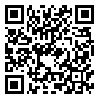

BibTeX | RIS | EndNote | Medlars | ProCite | Reference Manager | RefWorks
Send citation to:
URL: http://hcjournal.arums.ac.ir/article-1-191-en.html
Abstract
Background & Objectives: Cerebral palsy is a non-progressive static movement and position disorder that occurs following neurological injury. It's a general term for a group of chronic disorders that disrupts person movement control. Movement disorders appear in early years of life and usually do not gets worsen over time.
The cerebral palsy occurs due to the defect in brain development or damage to motor areas of the brain, so these areas are not able to control movement and posture of Person. Cerebral palsy is diagnosed throughout motor skills and reflex examination, medical history and various special tests. In this article, cerebral palsy, etiology, early diagnosis and intervention are discussed.
Methods: In this review article, the information related to keywords of cerebral palsy, prevalence, etiology, early diagnosis and intervention has been searched in SID, PUBMED, GOOGLE SCHOLAR, MAGIRAN and IRANMEDX. All articles from 1992 until 2014 were evaluated.
Conclusion: According to children with cerebral palsy’s conditions, early detection and intervention are necessary.
Keywords: Cerebral Palsy, Etiology, Intervention, Treatment.
| Rights and permissions | |
 |
This work is licensed under a Creative Commons Attribution-NonCommercial 4.0 International License. |


